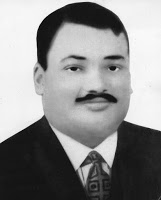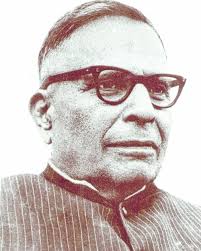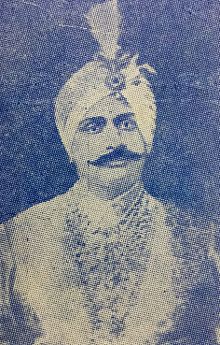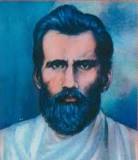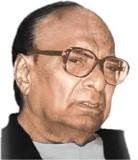
Biju Patnaik
(5 March 1916 – 17 April 1997)
Bijayananda Patnaik popularly known as Biju Patnaik– Born on 5th March, 1916–Son of Late L a x m i n a r a y a n Patnaik–Education : B. Sc.standard; Married : Shrimati Gyan Patnaik, two sons and one daughter; Prior occupation : Business; Hobbies : Aeronautics and Industry; Travel Abroad : U.K., U.S.A., U.S.S.R., Paris, Indonesia and several other countries; Political activities. Since boyhood fond of adventurous life; During student life set out on cycle from Cuttack to Peshawar; joined Indian National Airways and became its ace pilot, During “Quit India” Movement collaborated with underground leaders; Imprisoned for thirty months ; At the risk of his life he brought the Indonesian Premier Mr. Sultan Siharir to New Delhi by plane at the time of Indonesian Freedom Struggle. First Indian plane was landed by him in Kashmir in 1947, when Pakistan attacked India ; on returning to Orissa took interest in Industries and established many; President, U.P.C.C. for one term; Member, A.I.C.C., In 1961 Mid-term election under his leadership brought unprecedented absolute majority for Congress Party; Became Chief Minister 1961–63 and resigned under “Kamraj” Plan; Kalinga Airways is one of his creations. Donor of 1,000 pound prize to UNESCO as Science Award; Elected to the Orissa Legislative Assembly 1952, 1957, 1961 from Jagannathprasad, Surada (Ganjam) and Choudwar (Cuttack) respectively; again elected in 1971 and 1974 from Rajnagar (Cuttack); Chairman, Planning Board, Government of Orissa from 1971 to 1972 June. Took active part and rendered valuable service to the people of Rajnagar area in particular who suffered from the havoc caused by the cyclone in October, 1971. Elected to Parliament in 1977 and Cabinet Minister of the Central Ministry 1977 to 1979. Elected to Lok Sabha from Kendrapara Constituency in 1980. Again Shri Patnaik was elected to Lok Sabha from Kendrapara Parliamentary Constituency in 1984 Lok Sabha election. He was also elected from Bhubaneswar Assembly Constituency to Orissa Legislative Assembly in 1985 General Election. He resigned from Kendrapara Parliamentary Constituency and became the Opposition Leader in Orissa Legislative Assembly. Again he was elected to Orissa Legislative Assembly in 10th Orissa Legislative Assembly Election from Bhubaneswar Assembly Constituency. In 1990 under his dynamic leadership the Janata Dal secured more than three fourth majority of the Orissa Legislative Assembly which is quite unprecedented. He was unanimously elected as the Leader of the Janata Dal in Orissa Legislative Assembly and on his birth day he was sworn in as the Chief Minister of Orissa on 5th March, 1990. Again he was elected from Bhubaneswar Assembly Constituency in March, 1995 and became Leader of Opposition. Later he contested for Lok Sabha Election held in June, 1996 from Aska and Cuttack Constituency. He was elected from both the Constituencies. He resigned from O. L. A. and joined as Parliament Member from Aska Lok Sabha Constituency. This veteran leader passed away on 17th April, 1997 at Escort Hospital, New Delhi

